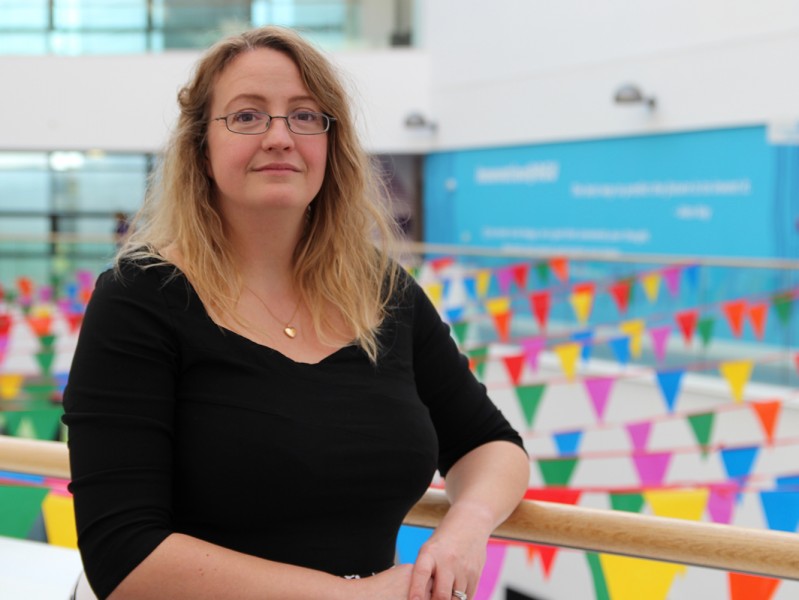Opinion - STEM-ing the leak in the pipeline
Thursday 26 September 2019

What comes to mind when you think of the word engineering?
Typically, individuals tend to imagine an engine and this is part of the problem engineering is facing. This traditional view of engineering is something we need to forget when talking to kids. This is because we need to inspire curiosity and engagement in STEM (Science, Technology, Engineering and Maths) subjects while our children are young if we have any chance of gender balancing the disciplines and addressing skills needs.
In Aberdeen, young people may typically associate engineering with the oil and gas industry. To ensure we attract the talent that our country needs we should help them to see the wider engineering picture, beyond the industry familiar to our city.
Instead, let’s tell them that engineering is about solving problems using scientific principles and processes and is absolutely vital in addressing global challenges. More inspirationally, the Royal Academy of Engineering says, “Engineers make things work, and make things work better. Engineers use their creativity to design solutions to the world’s problems.”
Creativity is an important word, it’s not one that is often associated with the discipline, or STEM in general. But creativity in STEM is fundamental as it helps us to stay innovative and solve problems. This is why festivals such as TechFest are so important; they help to bring STEM to life. Thinking about these topics beyond the one-dimensional, scientific angle may help to attract more young people, and more girls and women, to study them.
Gender-balancing engineering and STEM in general, is of absolute importance as 88% of engineers in the UK are men. The problem is what is known as the leaky pipeline.
I find this worrying. In my role, I work with students every day and I see how well-suited women are to the exciting challenges that engineering offers. At school, girls are generally not studying the subjects they need to become engineers. Of the girls that do choose these subjects, most will not choose to study engineering at university or college. If they do, many decide not to stay in engineering beyond graduation, despite the likelihood of them doing very well professionally.
The upshot is that engineers who are women more often than not are promoted out of technical roles. I shouldn’t be complaining: this means my dreams of diversity in the boardroom are (slowly) being realised. However, it leaves us with even fewer women engineers in technical coal-face engineering roles, perpetuating the myth that “proper” engineering is a man’s game.
The story needs to change. Of course, technical proficiency is a fundamental necessity, but tomorrow’s engineers need to be more mentally agile and more able to drive change and innovation than ever before. For that they need to have enhanced communication skills as well as technical skills.
Relying only on men to become engineers is not going to be sufficient. The engineering sector is facing a massive skills crisis – there is an annual shortfall of around 20,000 engineers. A government study has identified that the global engineering sector needs 186,000 skilled recruits each year until 2024, however the number of students studying engineering at university last year was around 165,000. Additionally, a review into the skills requirements of the UKCS workforce conducted by RGU’s Energy Transition Institute and OPITO identified that there is currently a gender deficit of around 40,000 women. It also noted that if we assume 50/50 recruitment from now, the number of women in the sector will rise from 25% in 2019 to 30% by 2025. While this is a step in the right direction, we need to do considerably more to achieve gender balance and address our skills shortfall. And we won’t even get near this until we can change the conversation around what it means to work in STEM, and in the case of engineering, what it is to be an engineer.
In business terms, there is a serious case for recruiting and retaining women in engineering. There is plenty of evidence that companies in the top quartile for gender diversity are considerably more likely to have higher financial returns. It’s even higher for those who are also racially and ethnically diverse. However, despite our collective efforts to address this, little has changed in terms of gender balance in the last 20 years.
We need to attract girls into STEM subjects early, when they are in preschool. We need early conversations about the role engineering plays in improving lives and the creative skills engineers need. We need engineering circles, societies, companies, schools and departments to come together, to think about their environments, to think about their workplace cultures and to actively listen to both the women in them and the women leaving them behind. We need to remind ourselves daily that engineering is more about ingenuity and less about engines these days…
Because the leaky pipeline cannot fix itself.
Jo-Anne Tait is an Academic Strategic Lead for Robert Gordon University’s School of Engineering. Her background is petroleum geology and she is currently working towards a PhD exploring the mental health of engineers.
